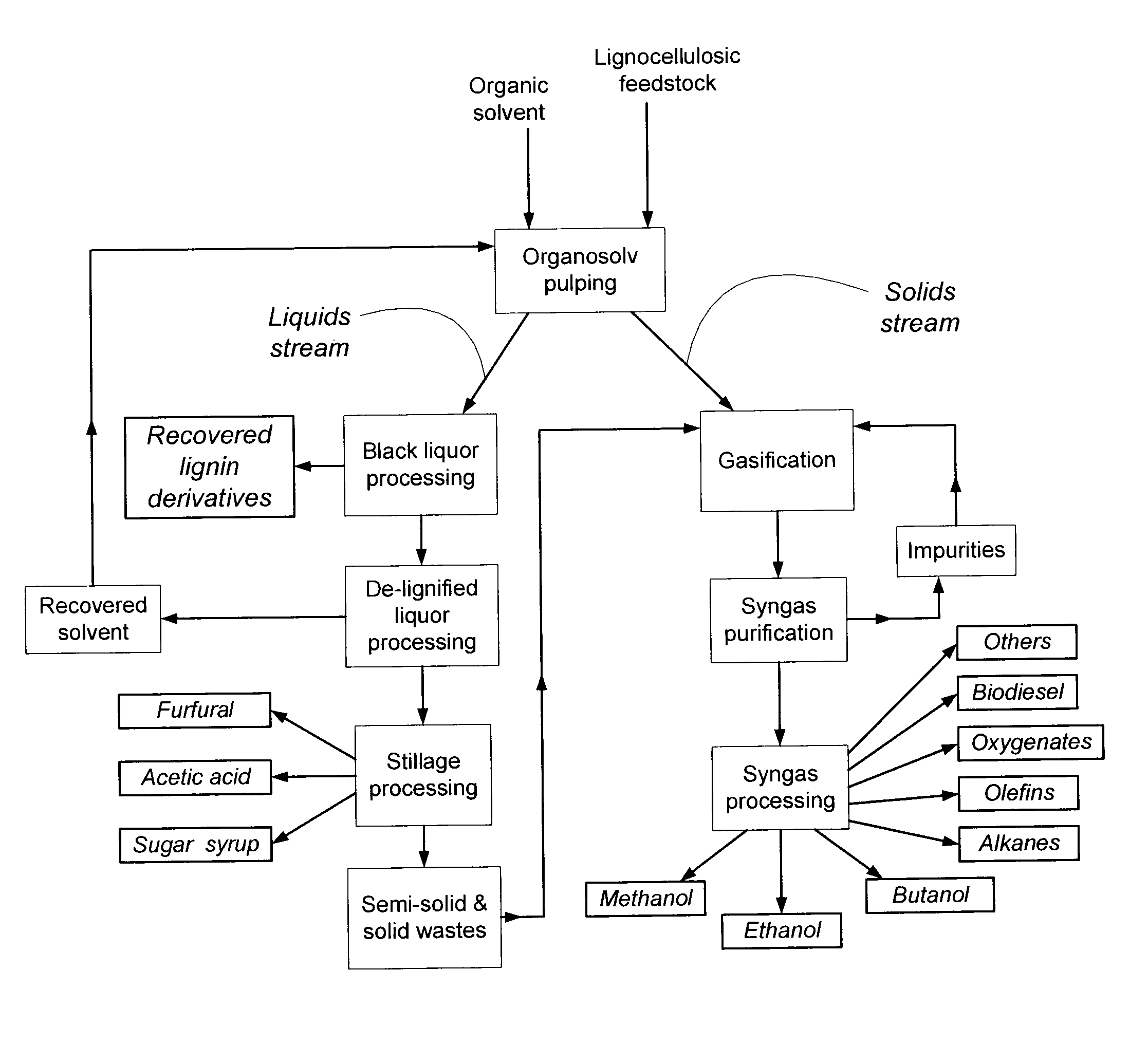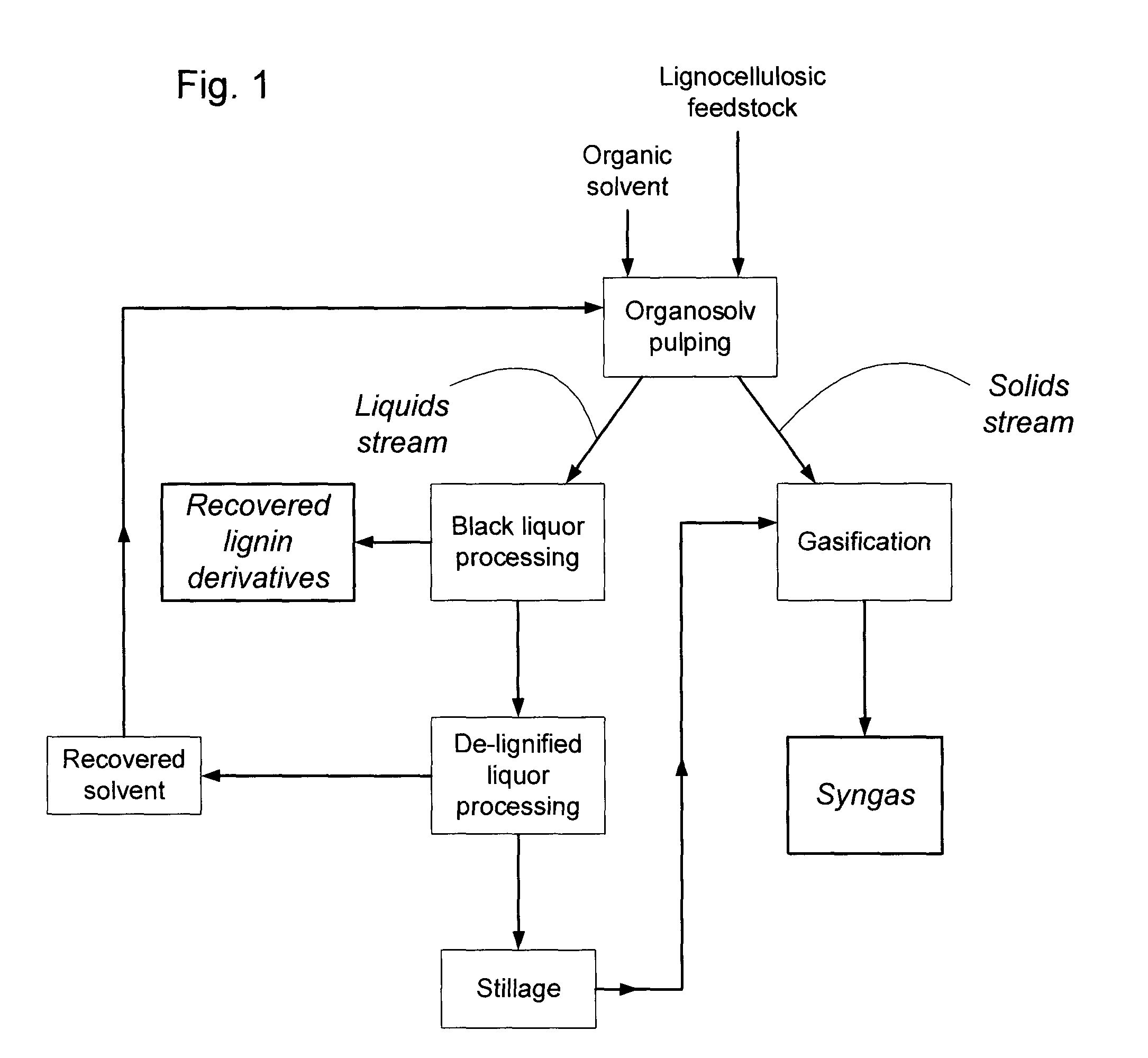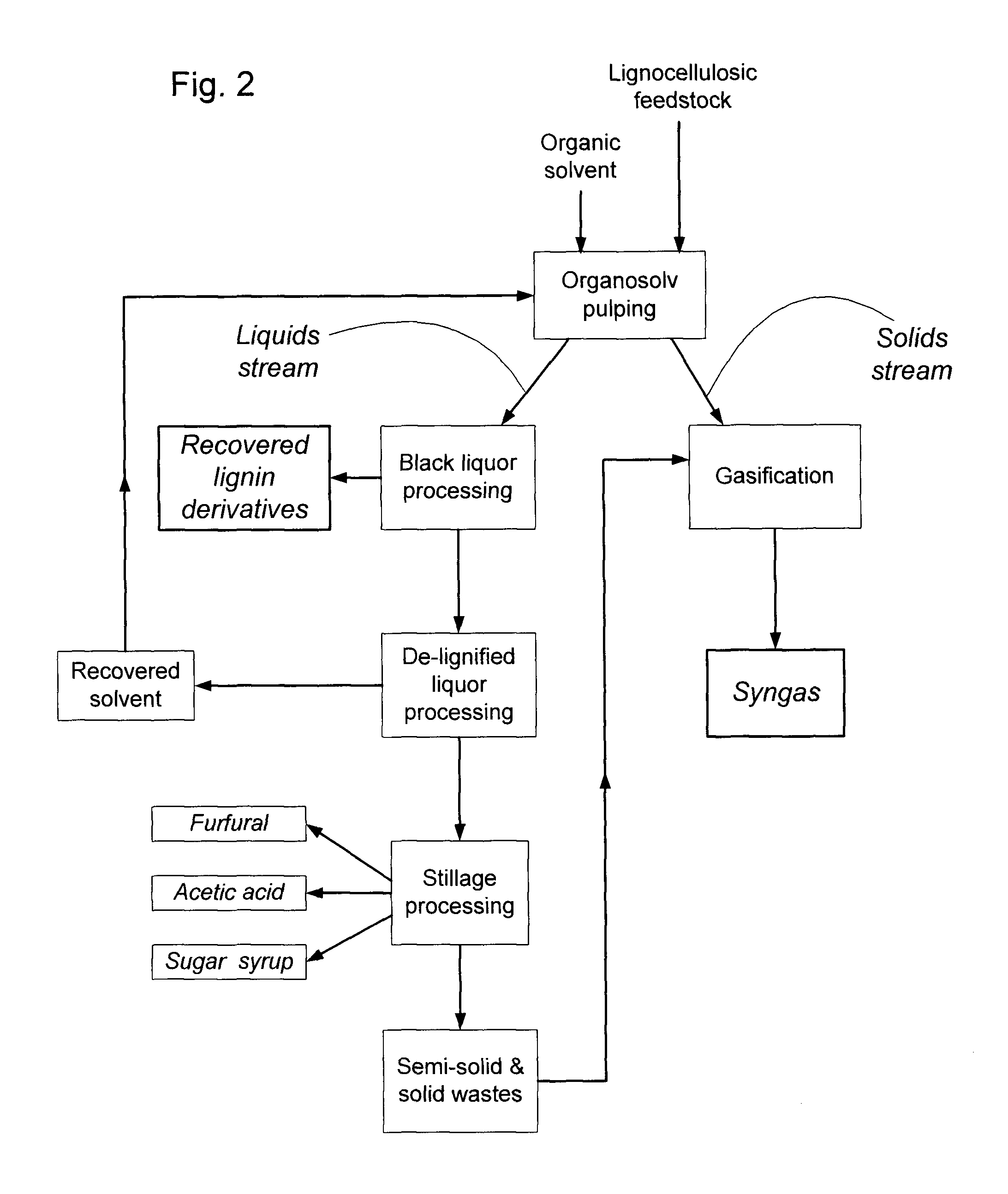Hybrid biorefining and gasification of lignocellulosic feedstocks
a technology of biorefining and feedstock, which is applied in the direction of liquid-gas reaction process, combustible gas production, chemical/physical processes, etc., can solve the problems of reducing the production efficiency of alcohol from sugar cane, affecting the quality of lignocellulosic feedstock, and accompanied by significant accumulation of solid wastes
- Summary
- Abstract
- Description
- Claims
- Application Information
AI Technical Summary
Benefits of technology
Problems solved by technology
Method used
Image
Examples
Embodiment Construction
[0029]Exemplary embodiments of the present invention relate to processes and systems configured for separating lignocellulosic feedstocks into two output streams wherein one stream is a liquid stream comprising solubilized lignin moieties and lignin derivatives, and the other stream comprises cellulosic solids that are subsequently gasified. Some exemplary embodiments relate to recovery of lignin derivatives from the liquid stream. Some exemplary embodiments relate to recovery of syngas from gasification of the cellulosic solids.
[0030]Suitable lignocellulosic feedstocks are exemplified by angiosperm fibrous biomass, gymnosperm fibrous biomass, annual and perennial field crop fibrous biomass, fruit and vegetable pulps, bagasse, waste paper and wood materials, the like, and mixtures thereof.
[0031]One exemplary embodiment of the present invention is shown in FIG. 1 and generally relates to processes and systems for separating lignocellulosic feedstocks into solids streams comprising ce...
PUM
| Property | Measurement | Unit |
|---|---|---|
| period of time | aaaaa | aaaaa |
| combustible | aaaaa | aaaaa |
| organic | aaaaa | aaaaa |
Abstract
Description
Claims
Application Information
 Login to View More
Login to View More - R&D
- Intellectual Property
- Life Sciences
- Materials
- Tech Scout
- Unparalleled Data Quality
- Higher Quality Content
- 60% Fewer Hallucinations
Browse by: Latest US Patents, China's latest patents, Technical Efficacy Thesaurus, Application Domain, Technology Topic, Popular Technical Reports.
© 2025 PatSnap. All rights reserved.Legal|Privacy policy|Modern Slavery Act Transparency Statement|Sitemap|About US| Contact US: help@patsnap.com



